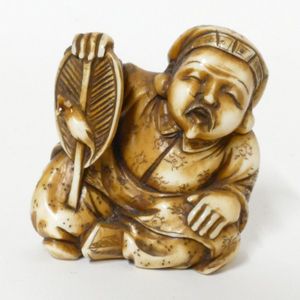Rhinoceros Horn Lotus Leaf Libation Cup
You must be a subscriber, and be logged in to view price and dealer details.
Subscribe Now to view actual auction price for this item
When you subscribe, you have the option of setting the currency in which to display prices to $Au, $US, $NZ or Stg.
- Qing Dynasty - The Qing Dynasty was the last imperial dynasty of China, ruling from 1644 to 1912. It was established by the Manchu people, who originated from the northeastern region of China. The Qing Dynasty was preceded by the Ming Dynasty and followed by the Republic of China.
- Ming Dynasty - The Ming Dynasty was a ruling dynasty of China from 1368 to 1644. It succeeded the Yuan Dynasty and preceded the Qing Dynasty. The Ming Dynasty was established by Zhu Yuanzhang, a former Buddhist monk who became a rebel leader and eventually overthrew the Mongol Yuan Dynasty. During the Ming Dynasty, China experienced a period of relative stability and prosperity. The government was centralized and bureaucratic, with the emperor at the top of the hierarchy. The Ming Dynasty is known for its cultural achievements, including the development of porcelain, the invention of movable type printing, and the construction of the Great Wall of China.
This item has been included into following indexes:
- oriental carved ivory
- religious objects, oriental - libation cups 142
Visually similar items

An antique Chinese high relief timber temple carving, early Qing Dynasty, circa 1,700, probably a crest piece for temple furniture, well carved and pierced, the dramatic and vigorous figural group comprising various Shizi and eight gods with their various

A Japanese ivory okimono, Meiji period carved with a man mounting a horse, signed, 4.3 cm high

Chinese soapstone carving of Deers in bamboo Forest, 19th/20th century, the stone of a cream tone with red and brown inclusions, on wooden stand. Height 14 cm

A 19th century ivory netsuke, of Ebisu seated whilst a rat climbs his fan, his robe patterned with cloud motifs. Height 3.7 cm. Provenance: The Flower Family Collection.
